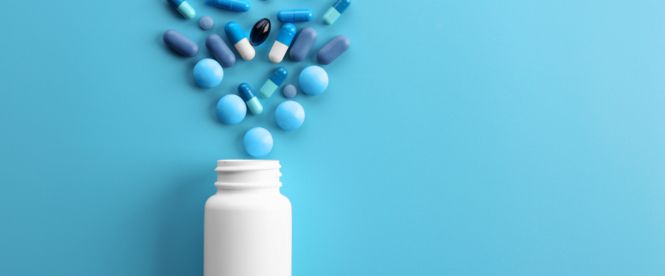HOW HORMONES GET INTO THE WATER AND HOW TO PROTECT YOURSELF
Among the pollutants that are increasingly contaminating our drinking water are residues from pharmaceuticals that get into the drinking water in various ways. Hormones are among the particularly high-risk active substances that are repeatedly detected in water samples taken by independent institutes and are increasingly attracting media attention. It is therefore all the more surprising that this particular form of drinking water contamination is currently not covered by any regulations. This is because hormones are not among the pollutants that are subject to a limit value that specifies the maximum quantity that may be released into tap water. They are therefore not subject to the regularity controls.
WHAT DO HORMONES DO IN THE HUMAN BODY?
As the body’s own messenger substances, hormones are produced in various glands of our organ system and transmitted via the bloodstream to so-called receptors. In this way hormones control numerous organ functions. Sex hormones such as the “female” estrogens and “male” androgens, including testosterone, are among the best-known hormones in our body, followed by insulin, adrenaline and serotonin.
During the puberty of girls and boys, the hormone balance of the later women and men is reorganised. This is often accompanied by side effects such as excessive sebum production in the skin or massive mood swings. For both sexes, a temporary surplus of androgens during puberty can lead to typical accompanying symptoms such as heavy perspiration and oily skin. An imbalance of hormonal forces is also frequently experienced by women during the menopause – when androgenic hormones gain dominance over oestrogens.
A literal hormone deficiency, on the other hand, is actually only a figure of speech. In medical terms, a lack of certain messenger substances is rather an excess of hormonal counterparts, which gain the upper hand as messenger substances. Hormone therapy is therefore not a matter of remedying a deficiency, but always of inducing an “overdose”. And if necessary or desired, this should always be carried out under medical supervision – but by no means from the tap.
WHAT DO ARTIFICIAL HORMONES SUPPLIED DO TO THE BODY?
The most widespread use of artificial hormones is in contraception using the contraceptive pill. Here, by additionally administering the female estrogen and progesterone, other receptors are blocked, which trigger ovulation. These artificial hormonal agents include progestin and ethinylestradiol, also known as EE2 for short. It is the latter substance that is causing increasing concern to aquatic researchers. Frogs and other amphibians, which are particularly sensitive to the presence of hormones in their natural environment, have been found to have the effect of “feminising” males. And this unwanted effect is medically the same as the desired effect of contraception: ovulation is prevented by feigning an existing pregnancy to the uterus. The latent danger that hormones in water may cause unwanted contraception is certainly present and is now being discussed by more and more experts.

WHAT RISKS DO HORMONES CAUSE IN DRINKING WATER?
Hormones are particularly dangerous if they are supplied in an uncontrolled way. The misuse of growth hormones such as steroids as doping agents in the field of weight training sadly documents the dark sides and grey areas of “hormone therapies” when they are administered without medical supervision, quite graphically. Doctors are not without reason extremely careful when prescribing hormone preparations of any kind. First of all, hormones have their effect and the associated side effects in the organism even in the smallest quantities. Secondly, hormone preparations always represent an intervention in the natural hormone balance, which brings with it not only external symptoms but also psychological side effects.
Scientists assume that the constant intake of even the smallest amounts of hormones can cause symptoms in the long term. Allergic reactions are suspected to be the indirect consequence of unintentional hormone intake, which are often side effects of hormone preparations. The long-term effects of hormones are still considered to be largely unexplored. However, more and more medical researchers are becoming sensitised to this particular problem and are devoting increased attention to this topic.

HOW DO HORMONES GET INTO DRINKING WATER?
The main cause of hormones in drinking water is considered to be the incorrect disposal of medication in the sink or via the toilet. Even drugs that have passed their sell-by date usually still contain sufficient active ingredients, for example hormones, which enter the water cycle in this way. Hormones are also released into the water cycle via the natural excretions of humans. Similar to vitamins, the body excretes in urine the amounts it does not need or can process itself.
Potentially, all hormones that are prescribed in the form of drugs during certain medical therapies can leave traces in our drinking water. In addition to the synthetic estrogen EE2, one of the main substances in contraceptive pills, which is often mentioned in connection with hormones in drinking water, insulins and steroids can also potentially contaminate our drinking water if they are disposed of incorrectly or even illegally.
Fattening of pigs and cattle in agriculture – although the use of growth hormones as a means of fattening has been banned throughout the EU since the end of the 1980s – is still considered a possible source of hormones in water. Sex hormones, which can be used to maximise the number of piglets and calves, are still used in alarming amounts.
AVOID HORMONES IN WATER
The filtration systems of the drinking water treatment plants are primarily designed for substances and loads that comply with our drinking water ordinance. Since hormones as drug residues are not among the parameters subject to official legal review and monitoring, in this case only self-help can help to protect against hormones in tap water with absolute certainty.

LUQEL WATER STATION
The LUQEL Water Station, which uses the filter principle of reverse osmosis, is able to remove even the smallest organic or synthetically produced micro-particles in the nano range from tap water

